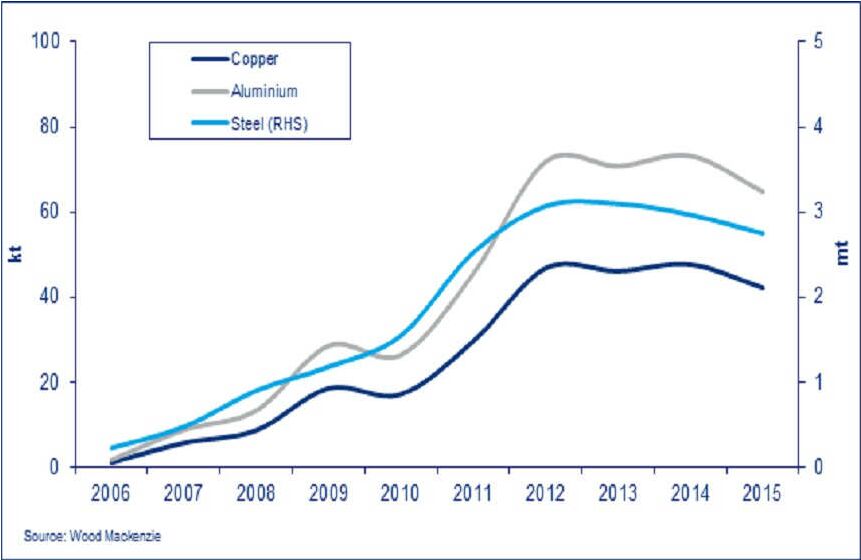New Wisdom Investment Limited
New demand to come from China
(May 08, 2017)
Just as numbers out of China appeared to indicate a pullback in metal demand, a report from consultant Wood Mackenzie has suggested the Chinese government is on the cusp of jump-starting another phase of metal-intensive development.
China’s decision announced last month to create a new state-level area of Beijing, Xiongan, should result in “significant investment in infrastructure and other construction” over the next decade, according to Wood Mackenzie.
The firm’s base case estimate suggests some 20 million tonnes of steel, 400,000t of aluminium, and 250,000t of copper demand will be needed over that period.
Xiongan is set to become a 2,000km2 hub, equivalent in size to Shenzhen, and the government describes the development as “the plan for the next 1,000 years”, though Wood Mackenzie believes this may be slightly overstating the area’s importance.
The government is hoping Xiongan takes some of the strain currently testing the limits of Beijing, which is struggling to accommodate its expanding population and at the same time tackle environmental objectives.

This will, naturally, require more metal.
“Initially, Xiongan will need to significantly upgrade its infrastructure,” according to Wood Mackenzie consultants Yanting Zhou and Adam Wang. “This will be almost equivalent to building an entire new city given the area’s current poor infrastructure.”
The relocation of industries and people will require both commercial and residential property builds.
“It is worth noting that, under the current plans, living space and commercial floor space per capita will be larger than Beijing,” the analysts said. “This additional demand for space will spur greater demand for home appliances, such as air-conditioners.”
Wood Mackenzie expected the extra demand to become evident in metal markets within three years, and possibly within 12 months.
Comparing Xiongan’s development to similar upgrades of Chinese areas during urbanisation, such as Binhai, which is on a similar scale, led Wood Mackenzie to forecast the base case metal consumption figures cited above. Peak construction and metal consumption would be from 2020-2025.
However, one could make an argument for comparing Xiongan to Shenzhen, which is a similar size to the eventual target area for Xiongan and was developed from a small village into one of China’s tier-one cities in only 35 years. Wood Mackenzie suggested a repeat on such a scale was unlikely, but factoring in development at a third of that was reasonable.
In such a scenario, the new area would add 30Mt of steel demand, 660,000t of aluminium demand, and 400,000t of copper demand to China’s metals consumption over the next 10 years.
The government could also use Xiongan to pilot infrastructure projects, such as underground utility tunnels, distributed renewable power, smart grids, and electric vehicle charging infrastructure, Zhou and Wang speculated.
“Projects of this type are copper intensive and may increase demand for the commodity,” they said.
The thought of another kick in China’s metal demand would have miners licking their lips, however, there was a healthy dose of caution in the Wood Mackenzie note to temper the enthusiasm.
“There are a number of risks to consider,” the firm warned. This included environmental concerns, which could suppress demand.
“While Xiongan has abundant water resources and few heavy-polluting industries, it lies in the middle of the most polluted area in China,” Zhou and Wang said. “If the air quality cannot be improved, it may prove difficult to attract people to Xiongan, reducing construction and steel and aluminium demand.”
Created from mining-journal.com